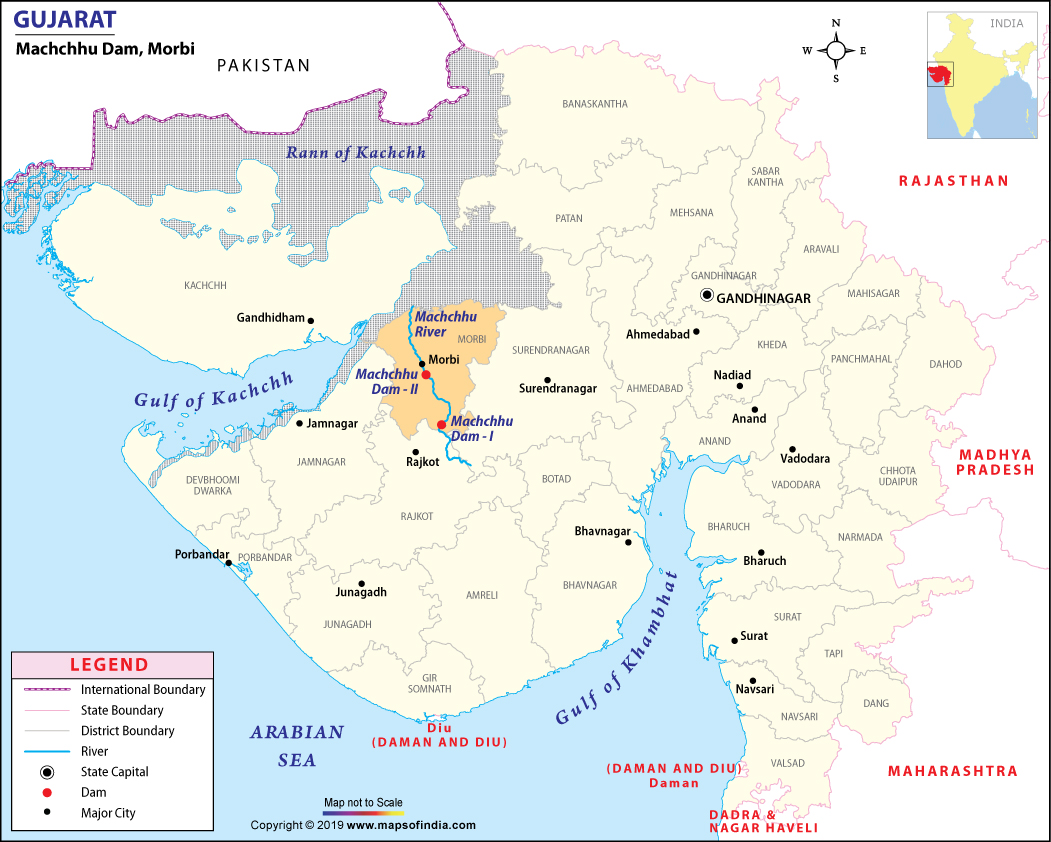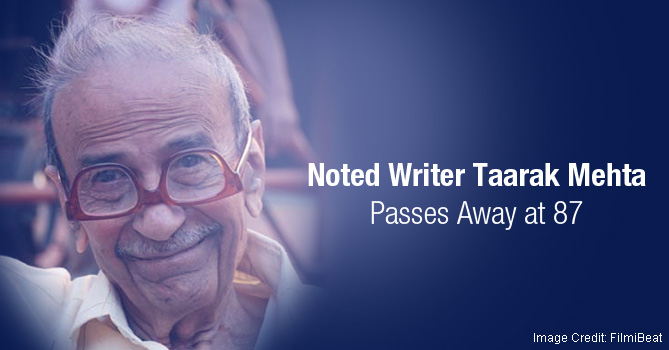
Incessant rain in Gujarat in the last few days has led to floods in several parts of the state, where relief and rescue operations are on in full swing. One such place is Morbi district, which has witnessed mayhem and destruction in the past too.
India’s first Prime Minister Pt. Jawahar Lal Nehru had given the term “Temples of Modern India” for river dams. By producing hydropower and irrigation through canals, dams indeed serve the humanity to a great extent. However, at times, dam failures cause havoc too. Machchhu Dam disaster was one such mishap, and one of the biggest dam disasters in the world, that happened 40 years ago in the month of August.
Machchhu Dam – II was built over Machchhu river near Rajkot in Gujarat. The dam was completed in 1972 with the main purpose of developing irrigation support. With a height of 22.56 metres above the riverbed, the dam had a spillway capacity of 5663m3/s. It was designed to pass 218,000 cusecs (cubic feet of water per second).
July 1979 was relatively dry with little rain. However, in the beginning of August, it started raining heavily. As a result, all the reservoirs in Saurashtra were filled up with plenty of water. On the evening of August 10, Machchhu – I dam started releasing water. Consequently, the gates of Machchhu – II dam were also opened. But two of the gates could not be opened due to mechanical failures, resulting in an accumulation of excess water in the dam reservoir. On the other hand, the release of excess water created flood-like situation in the following course of Machchhu river. Consequently, authorities started evacuating nearby villages of Jodhpar and Lilapar and lower areas of nearby city Morbi and Maliya. However, the authorities had little idea about the level of approaching disaster.
The uninterrupted torrential rain added to the problem by the next day. Following the release of more water from the previous dam and due to intense and continuous rain, the actual observed flow reached 16307m3/s, thrice of the capacity the dam was designed for. The situation was deteriorating and by the time the 7-member dam crew headed by mechanic Lakshmanbhai Mohan realized, it was too late to warn others. Around 1:00 pm, the large waves started to crash over the dam’s earthworks. Failure of the dam by over-topping became inevitable. Also, by that time, the wireless telegraph and other communication means had already died down.
Around 2:00 pm, 1.5 to 2 feet of water began to overtop the dam. At 2:15 pm, left earthwork began to wash away and water began to enter from the side to the downstream portion of the Machchhu river. Then the right earthwork washed away. The dam crew was stranded on one portion of the concrete dam in their cabin, and for the next several hours, watched helplessly a vast, raging river surrounding the spillway, emptying the entire reservoir, hurtling downstream towards the nearby town – Morbi.
Morbi – the 18th-century city – was established by the rulers of erstwhile Jadeja dynasty. The beautiful city had many a building with European architecture. There was a Buffalo Bridge on Machchhu river connecting the two sides of the city. The bridge had two huge Bronze Buffalo statues imported from Europe. The Green Tower – not as big as the tower in Paris – was built in 1888 – a year before the Eiffel Tower was completed. There was Darbargarh Royal Palace, Mani Mandir – the Taj Mahal of Saurashtra- and the Hanging Bridge. For the European architect of the city, Morbi was called the “Paris of Saurashtra”. The city is now known for its ceramic industry.
Within 20 minutes of the dam failure, the water reached Morbi. By 3:30 pm, the Paris of Saurashtra was submerged under mighty waves of 12 to 30 feet height. The colossus arches of Buffalo Bridge could not survive the huge pressure of Machchhu river, and the massive brick wall cracked and washed away. For close to 4 hours, the city of Morbi remained submerged underwater. Water went down around 7:30 pm, leaving behind signs of massive destruction and heaps of dead bodies. Government statistics claim around 1000 died, whereas unofficial figures are closer to a toll of around 25,000 lives lost.
Authorities termed Machchhu Dam failure as an “Act of God”, whereas it was clearly the structural and communication failure that led to one of the biggest dam disasters in history. The dam was reconstructed, and the spillway capacity was increased by 4 times to 21000m3/s. There is a memorial outside Mani Mandir, where every year on August 11 – at the anniversary of Morbi disaster – the survivors gather and pay homage to those who lost their lives in the disaster.
Jatin Patel is making a feature film on the disaster in Gujarati starring Mayur Chauhan and Shraddha Dangar. Directed by Shailesh Leuva, the movie “Machchhu” is expected to be released by December 2019.
Related Link:




